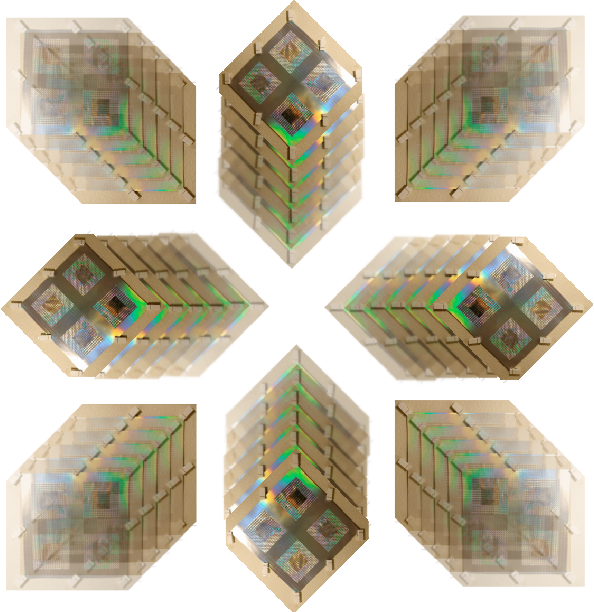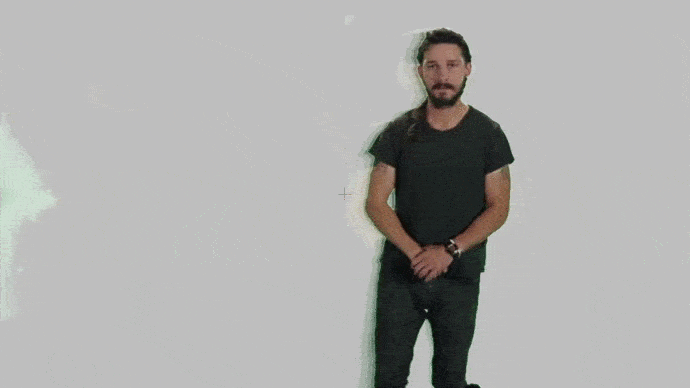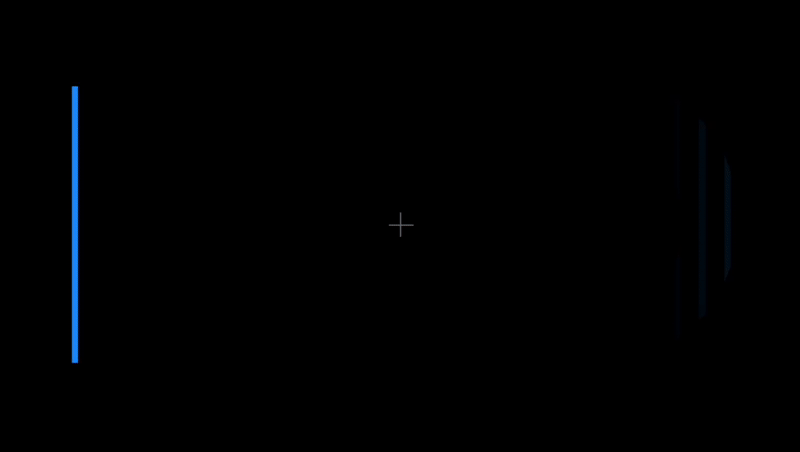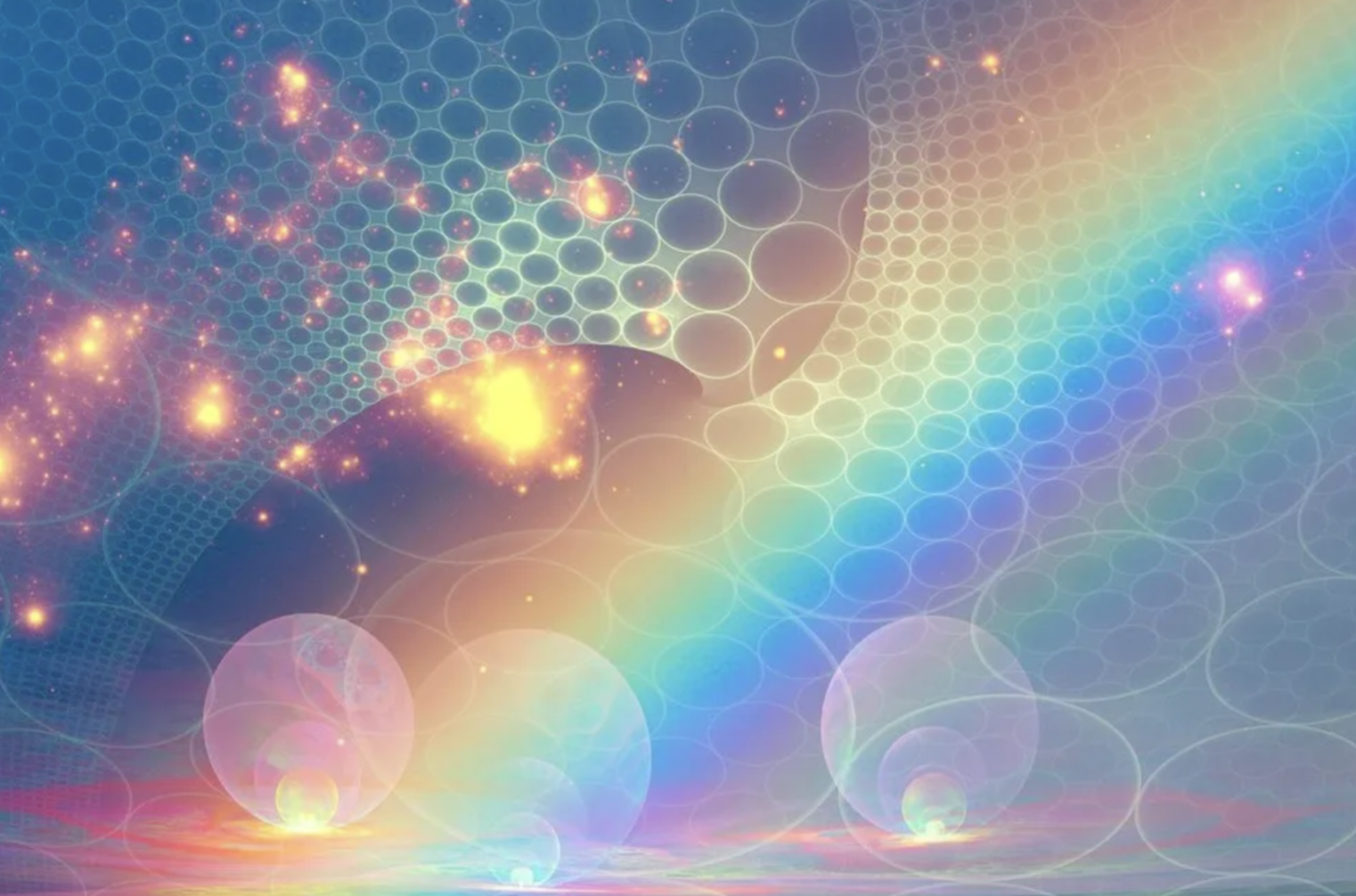Check out the winners of the Replication (Immerse) and Psychedelic Cryptography (Innovate) contests!
The Qualia Research Institute (QRI) is excited to announce the launch of three Non-Ordinary States of Consciousness (NSCs) Art Contests: Immerse, Innovate, and Inspire with submissions accepted until 5/17/2023. Examples of non-ordinary states of consciousness are psychedelic experiences, meditative experiences like the jhanas, and near-death experiences.

Our objective is to highlight the reciprocal relationship between art and consciousness research, enabling artists to create lifelike representations of non-ordinary states of consciousness and contribute to the development of consciousness studies and psychedelic science.
About the Qualia Research Institute
The Qualia Research Institute is a non-profit organization dedicated to advancing our understanding of consciousness. Its mission is to:
Develop a precise mathematical language for describing subjective experience
Map out the full range of possible conscious experiences
Build technologies to improve the lives of sentient beings
Learn more at qri.org.
Contest Details
The contests include:
- Replication Contest (Immerse): Entries will be judged based on transparent and interpretable qualities that accurately capture the low-level subjective effects experienced in non-ordinary states of consciousness.

- Psychedelic Cryptography Contest (Innovate): Artists are invited to create encodings of sensory information that are only meaningful when experienced on psychedelics in order to show the specific information-processing advantages of those states.

- Inspirational Piece Contest (Inspire): This contest seeks pieces that exemplify the connection between art and consciousness research.

Prizes
Cash prizes ranging from $500 to $5,000 will be awarded, along with packs of QRI’s Magical Creatures Scent Line and QRI swag.
How to Participate
Artists interested in participating or learning more about each contest can visit our submissions pages for further information:
Intellectual Property Rights
For the sake of transparency and to benefit the community as a whole, QRI reserves the right to publish the winning submissions made by contestants on its website. Artists retain their intellectual property rights, allowing them control over their artwork’s use and distribution. However, QRI would appreciate permission to showcase participants’ art on our website or use it in potential research publications with proper citations and links to the artists’ work.
Disclaimer
We understand that the replication contest may not capture the full complexity and nuances of psychedelic experiences, and that there are concerns about the potential harm associated with the use of psychedelics. Participation in these contests does not require the use of psychedelics, and we encourage all participants to prioritize their safety and well-being.
We welcome feedback and suggestions for future contests at hello@qri.org. We look forward to exploring these topics responsibly and respectfully.
Replication Contest
The Replication Contest seeks to celebrate the artistic capabilities of participants in accurately depicting and interpreting the low-level subjective effects experienced in non-ordinary states of consciousness (NSCs), with a particular emphasis on (1) valence effects and (2) geometric transformations.
Valence effects focus on demonstrating how the shape of the experience can reveal whether a person is having a clean and blissful experience or a mixed affect experience. The transition between feeling normal and feeling blissful might involve changes to the shape of the visual experience. Rather than focusing on the semantic content (e.g. seeing an angel) here the point is to visualize the texture, shape, and dynamics that bring about this change (e.g. harmonizing flow by reducing turbulence).
Geometric transformations such as rotations, reflections, glides, affine transformations, and so on often feature in psychedelic experiences. Can this be rendered in a realistic way? We suggest that you consider how symmetry and geometry are two sides of the same coin in order to better appreciate this quality of psychedelic experiences. When the geometry of phenomenal space changes, so do the symmetries within it. Can this be expressed artistically in an accurate way?
To participate, artists should create a piece of art that embodies the subjective effects they have researched or encountered during NSCs, emphasizing the two highlighted areas.
Familiarize yourself with the concept of algorithmic reduction (cf. our glossary), where the complex zoo of effects is interpreted as emerging out of a few core effects interacting with each other. See also the different subjective effects cataloged at effectindex.com, and draw inspiration from the QRI videos on psychedelic epistemology and the tracer tool. Additionally, explore the r/replications subreddit to see some remarkable replications.
Example ways to explore (1) and (2)
Showcase how more smooth, symmetrical, regular, and soft visual features express pleasant qualities of the experience (cf. valence structuralism, Michael Johnson’s Symmetry Theory of Valence).
Visualize an annealing process where the video contains blinking lights driven by metronomes that can sync up with each other until the whole scene is shining in a coherent way (cf. Neural Annealing).
Show how bouba vs. kiki imagery highlight different emotional tones during a psychedelic experience (cf. CDNS in Quantifying Bliss), where spiky feelings tend to be harsh and disquieting, whereas bubbly and round features tend to be calming and welcoming (extra points if these features emerge out of some kind of annealing process, or if you find counterexamples to this general pattern).
Visualize how wallpaper symmetry groups transform textures into repeating patterns.
Show waves interacting with each other in order to construct psychedelic interference patterns (cf. non-linear wave computing)
Use hyperbolic minimal surfaces in order to exemplify how sensations aggregate on DMT.
Show how the Reverse-Grassfire Algorithm can create 3D crystals (cf. Harmonic Gestalt)
Show a 2D Euclidean grid becoming hyperbolic by adding additional nodes and edges in order to demonstrate a change of geometry (cf. world-sheet)
Model the state of achieving a DMT breakthrough level experience using a physical instability (such as Kelvin-Helmholtz).
Simulate a trajectory on the energy-complexity landscape.
These are just some suggestions and there are many other ways of connecting technical descriptions of the phenomenology of NSE and visual replications. It helps if you can ground the effects visualized on paradigms and explanations presented by QRI, but it is not necessary to win the contest. What matters is that you can create realistic yet interpretable visualizations that hint at the underlying processes that are generating these experiences. What we are after is insight. In other words, we want to be able to discover new, meaningful, and non-trivial explanations for why NSEs manifest in the way they do. Hence, being able to describe how the replication effects are achieved is highly beneficial.
Entries will be judged based on the number and precision of replicated subjective effects, with special attention given to valence effects and geometric transformations.
Prizes
1st place - $5k + QRI’s Magical Creatures “Cutting-Edge” pack + QRI Swag
2nd place - $500 + QRI’s Magical Creatures “State-Space Explorer” pack + QRI Swag
3rd place - $500 + QRI’s Magical Creatures “Starter” pack + QRI Swag
Psychedelic Cryptography Contest
The Psychedelic Cryptography Contest invites artists to create unique encodings of sensory information that are only meaningful when experienced on psychedelics. The goal is to challenge participants to develop innovative methods of encoding sensory information in such a way that an encoded secret is only apparent on a NSC. The contest encourages the exploration of how sensory information can be modulated and presented in a way that reveals hidden patterns or messages when experienced under the influence of psychedelics.
Entries will be judged based on the difficulty of the encryption method used and the clarity of the message or pattern when experienced on psychedelics.
Prizes
1st place - $3k + QRI’s Magical Creatures “Cutting-Edge” pack + QRI Swag
2nd place - $500 + QRI’s Magical Creatures “State-Space Explorer” pack + QRI Swag
3rd place - $500 + QRI’s Magical Creatures “Starter” pack + QRI Swag
Inspirational Piece Contest
The Inspirational Piece Contest seeks to highlight the powerful connection between art and consciousness research by encouraging artists to create pieces that exemplify this relationship. The focus of this contest is on originality, creativity, inspiration, impact, quality, and execution. Artworks submitted for this contest should evoke a sense of wonder and curiosity about the nature of consciousness and the vast landscape of possible experiences.
Entries will be judged based on originality, creativity, inspiration, impact, quality, and execution, with winners determined by a public poll.
Prizes
1st place - $2k + QRI’s Magical Creatures “Cutting-Edge” pack + QRI Swag
2nd place - $500 + QRI’s Magical Creatures “State-Space Explorer” pack + QRI Swag
3rd place - $500 + QRI’s Magical Creatures “Starter” pack + QRI Swag
Submission Guidelines for All Contests
Participants can submit their entry in the form of a video or image.
The submission should be original and created specifically for the contest.
Participants can submit up to three entries per contest.
Submissions will be accepted starting on March 17th 2023 and must be submitted by May 17th 2023. Winners will be announced on June 1st 2023.
We encourage artists from the psychedelic and visionary art communities to participate and explore the connection between art and consciousness research. Good luck to all participants!
QRI’s Resources for Technical and Artistic Inspiration
Harmonic Society: 8 Models of Art for a Scientific Paradigm of Aesthetic Qualia
Why it’s helpful: This article presents 8 models of art: 4 common ones, and 4 that connect it to consciousness studies. The overall frameworks of 8 models might help us arrive at methods to create innovative aesthetic qualia from first principles. We think that artists participating in any of the contests might benefit from the vocabulary introduced in these models to create innovative and meaningful pieces that explore the relationship between art and consciousness research. In particular, taking into account the energy parameter, efficient state-space exploration, annealing effects, and the vision of a meta-aesthetic all provide a unique lens for how psychedelics and art are so connected.
How to Secretly Communicate with People on LSD
Why it’s helpful: This article discusses possible methods of communication that can be understood primarily by individuals under the influence of LSD and other tracer-inducing psychoactives. This may serve as inspiration for artists to think about novel ways to encode information or create unique experiences tailored to specific states of consciousness.
Algorithmic Reduction of Psychedelic States
Why it’s helpful: This article provides a detailed analysis of how the visual effects of psychedelics might be understood and replicated using algorithmic processes. It can serve as a foundation for artists attempting to replicate the visual aspects of non-ordinary states of consciousness in their artwork, or as inspiration to propose alternative algorithmic reductions that capture effects that are currently unaccounted for.
The Hyperbolic Geometry of DMT Experiences
Why it’s helpful: This article explores the connection between the subjective effects of DMT experiences and hyperbolic geometry, various possible algorithmic reductions to explain this connection, as well as detailing the progression of an experience through the DMT levels. Artists participating in the Replication Contest may find inspiration and insights into replicating specific visual patterns and structures often encountered in DMT experiences.
Psychophysics Toolkit (article)
Why it’s helpful: The Psychophysics Toolkit and accompanying article are collections of resources and tools designed to help researchers and artists explore the intersection of perception, consciousness, and the physical world. It includes a variety of resources and interface tools that can aid artists in understanding the principles of psychophysics used to measure subjective experience and applying them to their work. This can be particularly useful for participants in all three contests, as it can provide insights into the ways that sensory information is processed during both ordinary and non-ordinary states of consciousness, and how this can be utilized in creating innovative and impactful art pieces.
Psychedelic Epistemology: Novel Epistemological Paradigms for Studying Exotic Modes of Consciousness
Why it’s helpful: This video introduces new epistemological frameworks for studying and understanding non-ordinary states of consciousness induced by psychedelic substances. By incorporating these paradigms into their creative process, artists can develop a deeper understanding of the nature of these experiences and their potential implications for human knowledge. This enhanced understanding can help artists create innovative and thought-provoking pieces that capture the essence of exotic states of consciousness.
Why it’s helpful: This article provides a detailed explanation of the concept of phenomenal time and how it relates to the structure of conscious experiences. Understanding this concept could help artists in the contest to better represent the perception of time in non-ordinary states of consciousness and incorporate these insights into their artwork.
Wireheading Done Right: Stay Positive Without Going Insane
Why it’s helpful: This article explores the concept of wireheading and how it could be applied responsibly to maximize pleasure without causing psychological harm. Artists participating in the contest might find this article helpful in inspiring their work, particularly in the Inspirational Piece Contest, by envisioning a future where technology is used to enhance well-being and explore the state-space of consciousness responsibly.
Mapping State-Spaces of Consciousness: The Neroli Neighborhood
Why it’s helpful: This video explores the concept of state-space neighborhoods, where specific aspects of conscious experiences are clustered together. By understanding the structure and dynamics of these neighborhoods, artists can create pieces that more accurately represent the nuances of different non-ordinary states of consciousness, leading to a more immersive and impactful experience for the audience.
5-MeO-DMT vs. N,N-DMT: The 9 Lenses
Why it’s helpful: This article provides a comparative analysis of the experiences induced by 5-MeO-DMT and N,N-DMT. By understanding the unique characteristics of each substance’s effects, artists can draw inspiration for their artwork and more accurately replicate specific psychedelic experiences in the Replication Contest.
Acknowledgements
We would like to express our profound gratitude to the donors of the Qualia Research Institute. Your unwavering support has been invaluable in making our work possible. Your investment in our research has not only inspired a growing number of individuals to take our approach to consciousness research seriously but has also led to an expansion in our collaborations. As a result, we have seen the integration of our insights into the work of others, building upon the foundation we have established thus far.
First and foremost, we would like to extend our appreciation to Loka Vision for inspiring the contest. Their dedication to the Psychedelic/Visionary Art community, as demonstrated through their Psychedelic Replication Masterclass, has shown us the immense potential this community holds in furthering our understanding of consciousness.
Thank you Andrés Gómez Emilsson for offering technical insights that will enable artists to create life-like replications of the low-level subjective effects experienced on NSCs and incepting the idea of psychedelic cryptography as a viable field of research.
A thank you goes to Josie Kins of effectindex.com for their open-source approach to developing psychedelic art through generative AI, as well as their support of and feedback on the Replication contest and insights into the visionary/psychedelic art community.
Additional thanks to Scry, Marcin, gydravlik.eth, PsyNFT, and Ferociously Amused for their invaluable feedback on the contest and their contributions to our understanding of the visionary/psychedelic art community and thank you Maggie and Anders Wassinge for your unwaivering support.
❤️💎